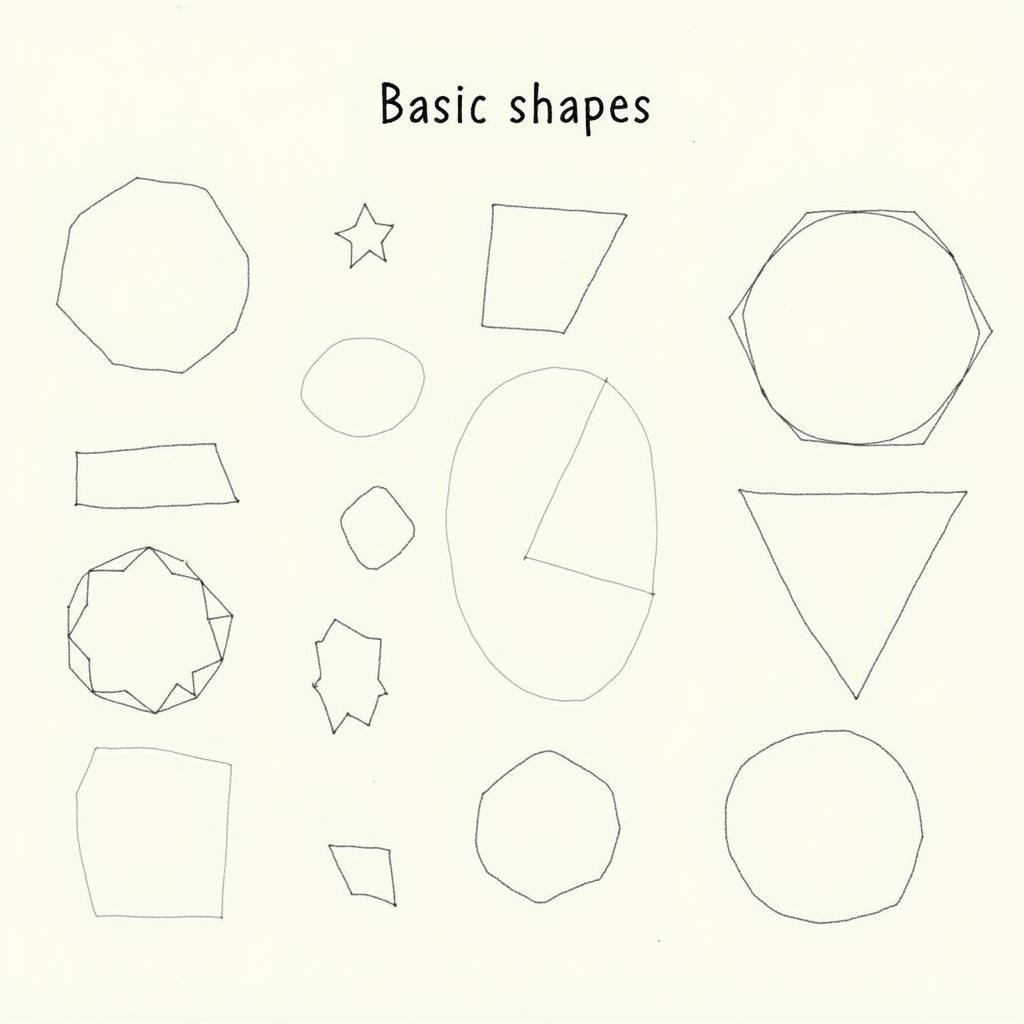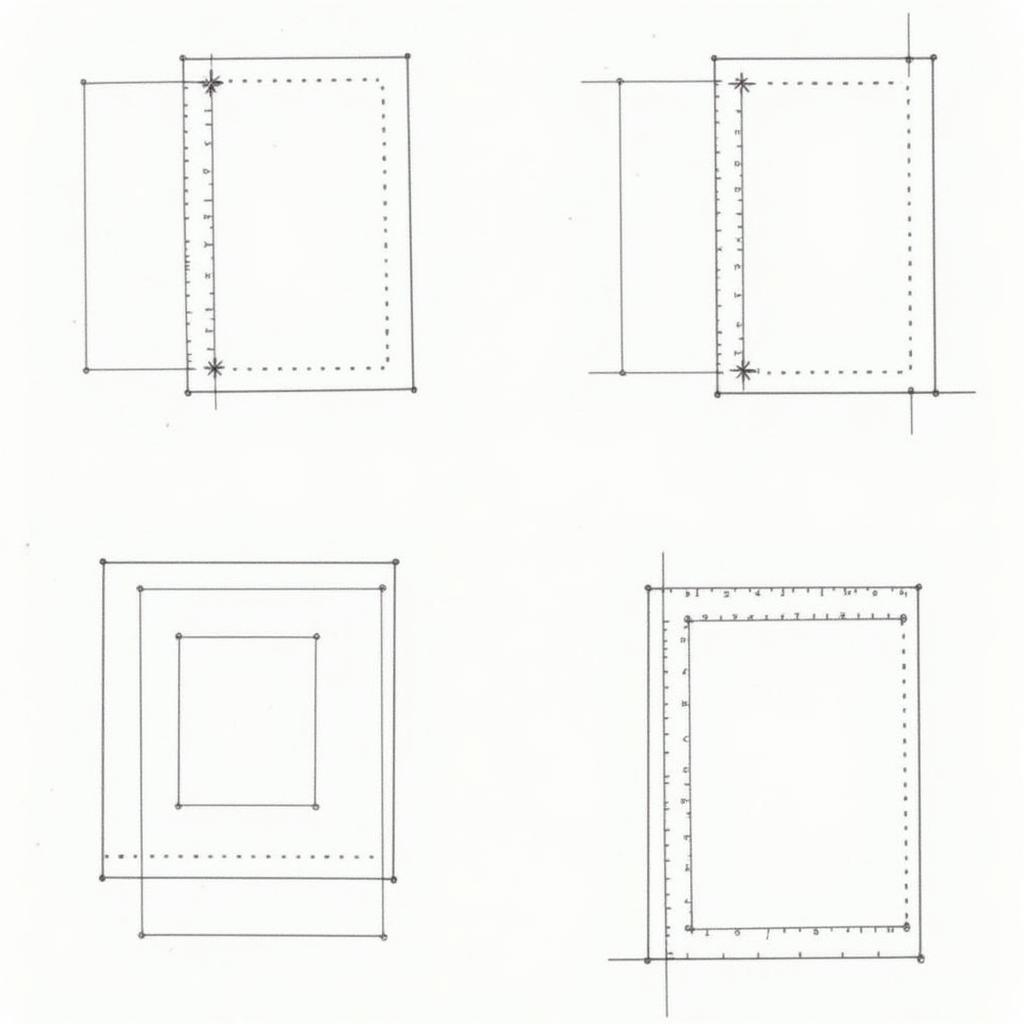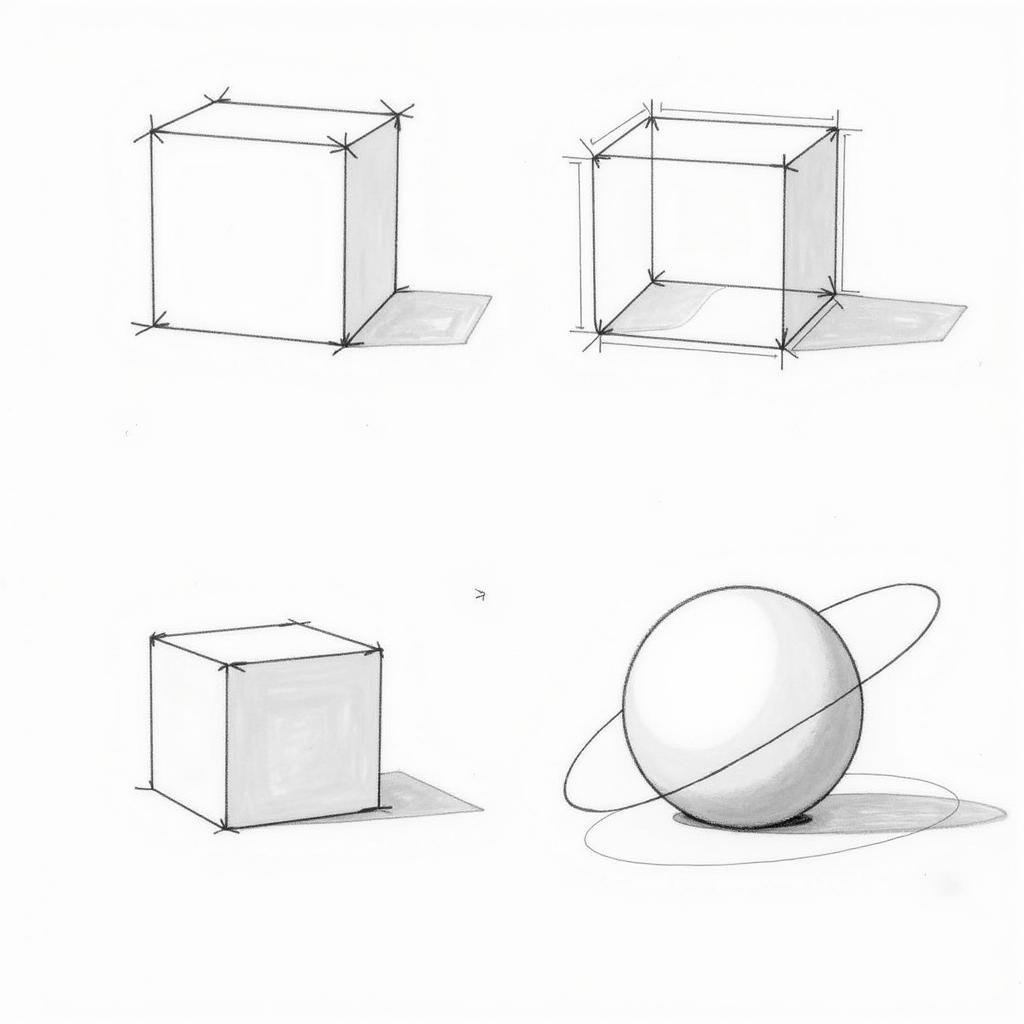Drawing basic shapes is the foundation of any artistic endeavor, from sketching a quick doodle to creating complex architectural blueprints. Understanding how to construct these fundamental forms is crucial for developing your artistic skills and enhancing your visual communication. This guide will take you through the essential steps of drawing basic shapes, providing you with the knowledge and techniques to confidently begin your artistic journey.
Understanding the Importance of Basic Shapes
Why are basic shapes so important? They serve as the building blocks for more complex objects. By mastering the construction of squares, circles, triangles, and rectangles, you’ll be able to deconstruct any complex form into its simpler components, making the drawing process much more manageable. Imagine drawing a car – it’s essentially a collection of rectangles, circles, and trapezoids cleverly arranged.
 Drawing Basic Shapes: The Foundation of Art
Drawing Basic Shapes: The Foundation of Art
Getting Started: Tools and Techniques
Before we dive into drawing, let’s talk about the essential tools. You don’t need fancy equipment to start. A simple pencil and paper are enough. However, as you progress, you might consider experimenting with different drawing tools like charcoal, pastels, or pens to discover which medium suits your style best. For precision, a ruler and compass can be invaluable, especially when practicing perfect circles and straight lines. A good eraser is also a must-have for correcting mistakes and refining your drawings.
Drawing Basic 2D Shapes
Let’s start with the simplest forms: 2D shapes.
Drawing a Square
- Draw a horizontal line.
- Draw a vertical line perpendicular to the first line, of equal length.
- Draw another horizontal line parallel to the first, connected to the vertical line.
- Connect the remaining open ends with a vertical line parallel to the second line.
Drawing a Rectangle
The process for drawing a rectangle is similar to a square, but the lengths of the adjacent sides are different.
- Draw a horizontal line.
- Draw a shorter vertical line perpendicular to the first line.
- Draw another horizontal line parallel to the first, connected to the vertical line.
- Connect the remaining open ends with a vertical line parallel to the second line.
 Drawing Squares and Rectangles Step-by-Step
Drawing Squares and Rectangles Step-by-Step
Drawing a Circle
Using a compass:
- Place the point of the compass on the paper.
- Open the compass to your desired radius.
- Rotate the compass 360 degrees, keeping the point fixed, to draw a perfect circle.
Freehand:
- Lightly sketch a square.
- Round the corners of the square, trying to maintain a consistent curve.
- Gradually refine the curve until it resembles a circle.
Drawing a Triangle
- Draw a horizontal line.
- Choose a point above the line.
- Draw two lines connecting the endpoints of the horizontal line to the point above.
Drawing Basic 3D Shapes
Now, let’s move onto 3D shapes, which add depth and volume to our drawings. We’ll focus on the cube and sphere.
Drawing a Cube
- Draw a square.
- Draw another slightly offset square behind the first one.
- Connect the corresponding corners of the two squares with parallel lines.
Drawing a Sphere
- Draw a circle.
- Add an ellipse inside the circle, representing the contour of the sphere.
- Shade the sphere to create a sense of volume and roundness.
 Drawing 3D Shapes: Cube and Sphere
Drawing 3D Shapes: Cube and Sphere
Conclusion
Mastering basic shapes is the first step towards becoming a proficient artist. By understanding these fundamental forms and practicing regularly, you’ll unlock the ability to draw virtually anything you can imagine. Remember, patience and persistence are key to improvement. So, grab your pencil and paper, and start drawing!
FAQ
- What are the most basic shapes? Circle, square, triangle, and rectangle.
- What tools do I need to draw basic shapes? Pencil, paper, and optionally a ruler and compass.
- How do I draw a perfect circle? Use a compass or practice freehand techniques.
- What is the difference between 2D and 3D shapes? 2D shapes are flat, while 3D shapes have depth and volume.
- How can I improve my drawing skills? Practice regularly and study the shapes of objects around you.
- What is the importance of drawing basic shapes? They are the foundation for drawing more complex objects.
- How do I draw a cube? Start with two squares and connect their corners.
Need support? Contact us: Phone: 0372960696, Email: TRAVELCAR[email protected] or visit us at 260 Cau Giay, Hanoi. We have a 24/7 customer service team.

